Tactical missile system 2K1 "Mars"
Work on the creation of a promising self-propelled machine capable of transporting and launching a ballistic missile with a nuclear warhead began even before the appearance of usable ammunition. The first works on the new project started in 1948 and were carried out by specialists from the Research Institute-1 of the Ministry of General Engineering (now the Moscow Institute of Thermal Engineering). Initially, the aim of the work was to study the possibility of creating the required technology, as well as to determine its main features. In the case of obtaining positive results, the work could go on to the stage of designing real samples of equipment.
The study of the problems of creating a tactical missile complex lasted until the 1951 year. The works showed the fundamental possibility of creating such a system, which soon led to the emergence of new orders from the customer. In 1953, SRI-1 received a technical task for the development of a tactical missile with a range of up to 50 km. In addition to the flight range, the technical specification specified the weight and overall parameters of the product, as well as the requirements for the use of a small-sized special warhead. In accordance with the new decree, SRI-1 began developing the required rocket. The chief designer was N.P. Mazurov.
In the first days of 1956, by a resolution of the Council of Ministers of the USSR, the SKB-3 TsNII-56 led by VG was attracted to work on a promising missile system. Grabin This organization was supposed to develop a self-propelled launcher for a rocket created by SRI-1. A few months after the resolution of the Council of Ministers, the main enterprises involved in the work submitted ready-made documentation, which made it possible to begin preparations for the tests.
In the future, a new type of tactical missile system received the symbol 2K1 and the cipher "Mars". The rocket of the complex was designated as 3P1, for the launcher the index 2П2 was used, for the transport-charging machine - 2П3. In some sources, the rocket is also referred to as “Owl”, but the correctness of this designation raises some questions. In relation to the various components of the complex at certain stages of development, some other designations were used.
Initially, the composition of the tactical missile system was proposed, which did not receive the approval of the customer. The first design version of the Mars complex was designated S-122 and was supposed to include several different means built on the same chassis. A self-propelled launcher with the symbol S-119, capable of transporting a rocket without a warhead, a transport and loading vehicle S-120 with three lodgment for missiles, and a transport vehicle S-121, capable of transporting a special container with four warheads, were proposed. It was proposed to use a lightweight floating tracked chassis as the base for the Mars vehicles. tank PT-76, adopted in the early fifties.
The C-122 complex variant did not suit the customer for a number of reasons. For example, the military did not approve the need to connect the missile and the warhead directly on the launcher. Due to the failure of the customer design work was continued. Based on the existing developments, taking into account the wishes of the military, a new version of the C-122А complex was developed. In the updated project it was decided to abandon some of the components and principles of work. For example, the missiles should now be transported as an assembly, which made it possible not to use a separate vehicle, the conveyor of combat units. Now, only two self-propelled vehicles were included in the complex: the C-119А or 2П2 launcher, as well as the C-120А or 2П3 transport-loading launcher.
In the C-122A project, it was proposed to retain the previously proposed approach to the creation of technology. All new models of equipment should have the highest possible unification. They were again invited to build on the basis of the floating tank PT-76. In the course of creating new self-propelled machines, it was necessary to remove all unnecessary equipment from the existing chassis, instead of which it was planned to mount new components and assemblies, primarily the launcher or other means of transporting missiles.
The chassis of the tank PT-76 had anti-bullet protection in the form of armor plates up to 10 mm thick, placed at different angles to the vertical. A classic case layout was used, modified to meet specific requirements. In front of the case was placed the department of management, behind which the tower was located. The feed was given under the engine and transmission, associated with both tracks and jet propulsion.
In the engine compartment of the PT-76 tank and the vehicles built on its base, the B-6 diesel engine with a capacity of 240 hp was placed. With the help of a mechanical transmission, the engine torque was transmitted to the drive wheels of the tracks or to the drive of the jet propulsion unit. There were six road wheels with individual torsion bar suspension on each side. With the help of the available powerplant and undercarriage, the amphibious tank could reach speeds of up to 44-45 km / h on the highway and up to 10 km / h on the water.
The 2P2 project implied the removal from the existing chassis of all unnecessary components and assemblies, instead of which it was necessary to mount new devices, primarily the launcher. The main element of the launcher was the turntable mounted on the existing chase of the roof of the tower. It should have a hinge to install a guide with a length of 6,7 m. In the rear part of the platform there were outriggers, which, when lifting the guide, should be lowered to the ground and ensure a stable position of the launcher.
The beam guide had grooves to hold the rocket in the desired position until it left the installation. Interestingly, at the preliminary design stage, two versions of the guides were proposed: straight and with a slight deviation from the axis to give the rocket rotation. Rocket guide was equipped with a set of additional equipment. So, there were hydraulic actuators for lifting the guide to the desired angle. To protect the rocket and prevent its displacement when the launcher was moved, there were holders of the frame structure on the side portions of the guide. Their design ensured the holding of the rocket, but did not interfere with the movement of its tail.
In the transport position, the front part of the guide, located under a certain inclination, was fixed on the front support frame, mounted on the front sheet of the body. On this frame also fastened cables used by some systems.
The design of the launcher made it possible to change the horizontal pickup when firing within the 5 ° to the right and left of the neutral position. Vertical guidance ranged from + 15 ° to + 60 °. In particular, to launch a rocket at a minimum distance, it was necessary to establish an elevation of the 24 ° rail.
The total length of the 2P2 self-propelled launcher was 9,4 m with a width of 3,18 m and a height of 3,05 m. The combat weight of the vehicle was changed several times. The technical task required keeping this parameter at the level of 15,5 t, however, the prototype weighed 17 t. In a series, the mass was brought to 16,4 t. The total weight of the launcher mounted on the chassis, together with the rocket, exceeded the 5,1 t. Without a rocket, the 2P2 could reach speed to 40 km / h. After installing the rocket, the speed was limited to 20 km / h. Power reserve was 250 km. For the management of the machine responsible crew of three.
The 2P3 transport-charging machine was different from the launcher by a set of special equipment. On the roof of this sample were installed two sets of mounts for the transport of missiles, as well as a crane for their transfer to the launcher. The chassis of the two machines of the Mars complex had the maximum degree of unification, which simplified the joint operation and maintenance of equipment. The characteristics of the 2P2 and 2P3 machines differed slightly.
As part of the 2K1 "Mars" project, the research institute-1 staff developed a new ballistic missile 3Р1, in some sources it is designated by the Sow code. The rocket received a cylindrical body of large elongation, accommodating a solid-fuel engine. Provision was made for the use of an over-caliber warhead containing relatively large warheads. A stabilizer with four planes was located in the tail part of the body. The total length of the 3P1 was 9 m with a case diameter of 324 mm and a head diameter of 600 mm. The span of the stabilizers was 975 mm. Rocket launch weight - 1760 kg.
In the enlarged head of the 3P1 rocket, special ammunition was placed. This product was developed in KB-11 under the guidance of Yu.B. Khariton and S.G. Kocharyants. It is noteworthy that the creation of a warhead for the Mars complex began only in the 1955 year, when the main part of the design work on the rocket was completed. The mass of the warhead was 565 kg.
After abandoning the C-122 project, which meant a separate transporter of combat units, measures were taken to ensure the required conditions for special charges. When transported to the TZM and launcher, the head of the rocket was covered with a special cover with a heating system. Offered electric and water heating. In both cases, the power systems of the cover was carried out by a regular armored car generator.
Inside the body of the 3P1 rocket there was a two-chamber solid propellant engine. The head chamber of the engine, located in the front of the case, had several nozzles divorced sideways to exhaust gases in order to avoid damage to the structure. The tail chamber of the engine used a set of nozzles at the end of the body. The engine nozzles were placed at an angle to the rocket axis, which made it possible to impart rotation to the product during flight. The rocket engine used ballistic powder type MF-2.
Thrust solid engine depended on some parameters, primarily on the temperature of the fuel charge. At + 40 ° C, the engine could develop thrust up to 17,4 t. Lowering the temperature led to some reduction in thrust. The available fuel charge weighing 496 kg was enough for 7 seconds of engine operation. During this time, the rocket could fly about 2 km. By the end of the active section, the rocket speed reached 530 m / s.
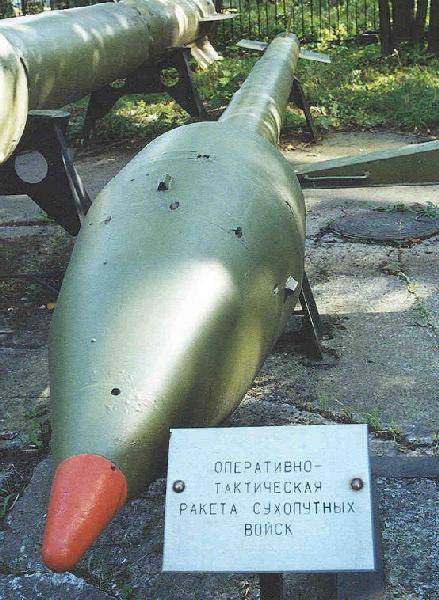
Mockup of the 3P1 rocket. Photo Russianarms.ru
Missile complex 2K1 "Mars" had no control systems. During start-up, the fuel stock should have been completely consumed. Separation of the missile with the discharge of the head part was not provided. Guidance was to be carried out by setting the launch guide to the desired position. For some increase in accuracy during the flight the rocket had to rotate around the longitudinal axis. This method of start-up and engine parameters made it possible to attack targets at a minimum range of 8-10 km. The maximum firing range reached 17,5 km. Estimated circular probable deviation was hundreds of meters, and had to be compensated by the power of the warhead.
In the spring of 1958, the creation of an auxiliary equipment complex began, which should have been used to work with 3P1 rockets. Mobile repair and technical base PRTB-1 "Step" was designed to service missiles and special combat units. The main task of the mobile base was the transportation of combat units in special containers and their installation on missiles. The complex "Step" included several machines for various purposes on a unified wheeled chassis. There were carriers of combat units, service vehicles, truck cranes, etc.
In March, 1957, at the Kapustin Yar test site, were delivered prototypes of the promising 3P1 rocket, which were planned to be used in tests. Due to the lack of a ready-to-use self-propelled launcher during the first stages of testing, a simplified stationary system was tested. The C-121 product (not to be confused with the transporter from the early C-122 project) was a launcher similar to that proposed for use on 2P2 machines. The stationary launcher was used in testing until the middle of the 1958 year, including after the appearance of the 2P2 machine.
A little earlier than the start of the missile tests, self-propelled armored vehicles used in the Mars complex were built. Already the first ground tests showed that the available prototypes 2P2 and 2P3 did not fully meet the existing requirements. First of all, the reason for the claims was the excessive weight of the structure: the self-propelled gun with the launcher was one and a half tons heavier than the required one. In addition, left much to be desired stability launcher at launch. In total, the customer noted about two hundred shortcomings of the presented equipment. It was necessary to begin work on their elimination, and in some cases it was a question of refining both the launcher and the unguided rocket.
Since June, 1957, at the Kapustin Yar test site, tests of the 2K1 "Mars" complex were fully completed. During this stage of the tests, the missiles were launched not only from the C-121 installation, but also from the 2P2 machine. Similar checks with missile launches, divided into several series of launches, continued until mid-summer of the following year. During the shooting at the test sites, the main characteristics of the missile complex were confirmed, and some of its parameters were clarified.
The calculated parameters for preparing the complex for firing were confirmed. After arriving at the firing position, the calculation of the missile complex required 15-30 minutes to prepare all the systems and launch the rocket. The placement of the new rocket on the launcher using the transport-loading machine took about an hour.
During the tests, it turned out that when firing at the minimum range, the Mars complex shows the least accuracy. The KVO in this case reached 770 m. The best accuracy with the KVO at the level of 200 m was obtained when firing at the maximum range - 17,5 km. The rest of the complex is fully consistent with the requirements of the customer and could be adopted.
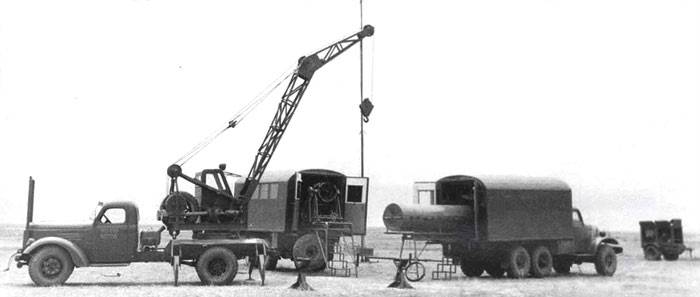
Mobile repair and technical base PRTB-1 "Step". Photo Militaryrussia.ru
Even before the completion of all tests, it was decided to adopt the missile system. The corresponding decree of the Council of Ministers issued 20 March 1958 of the year. Soon after, in April, a meeting was held with the participation of the management of enterprises engaged in the project. The purpose of this event was the formation of the schedule of mass production of equipment and the definition of the main dates. The customer demanded that by the middle of 1959, 25 complexes of a new type as part of a self-propelled launcher and transport-loading machine. Thus, preparation for mass production began before the completion of the tests.
By the middle of 1958, work began on the creation of alternative self-propelled machines for the tactical missile system. Tracked chassis, borrowed from the tank PT-76, had some negative features. In particular, there was a significant rocking of the missile mounted on the launcher. In this regard, there was a proposal to develop a new self-propelled equipment on wheeled chassis. The four-axle ZIL-135 chassis was proposed as the basis for this version of Mars. Wheel launcher received the symbol Br-217, TZM - Br-218.
The Br-217 and Br-218 projects were developed by the end of September 1958 and presented to the customer. Despite some advantages over existing 2P2 and 2P3 machines, the projects were not approved. While maintaining the existing components, the missile system could begin service as early as 1960. Replacing tracked chassis with wheeled could shift the timing by about a year. The military department considered such a transfer of the start of operation unacceptable. Projects of wheeled vehicles were closed.
At the end of September 1958, the Barricades plant (Volgograd) received several PT-76 tank chassis, which should have been used as the basis for elements of the missile system. By the end of the year, plant employees built one self-propelled launcher and TZM, which were later used in factory tests. After the completion of factory inspections, an order for additional tests appeared. The existing equipment of the Mars and Luna complexes should have been sent to the Aginsky artillery range of the Trans-Baikal Military District. The inspections were carried out during February 1959 at low temperatures and in appropriate weather conditions.
According to the test results in the Transbaikalia complex 2K1 "Mars" received only two comments. The military noted the negative impact of the rocket engine jet on the individual launchers, as well as the insufficient effectiveness of the rocket warhead heating systems. Electric heating of a special warhead turned out to be more efficient than water heating, but even he could not cope with the load in some temperature ranges.
After completing additional testing at low temperatures, the military gave the go-ahead to deploy a full-fledged mass production of a new tactical missile system. The 2P2 and 2P3 machines were built serially over 1959-60's. During this time, only about fifty products of two types were built, and a certain number of chassis for auxiliary equipment was also equipped. As a result, the troops received only 25 complexes "Mars" as part of one self-propelled launcher, one transport-loading machine and some other means. In parallel with the construction of armored vehicles at other enterprises, the assembly of missiles and special combat units for them was carried out. Small volumes of production, in the first place, were associated with the deployment of the release of equipment with higher characteristics. So, the 2K6 “Luna” complex with a more advanced rocket could attack targets at distances of 45 km, due to which the further production of the “Mars” did not make sense.
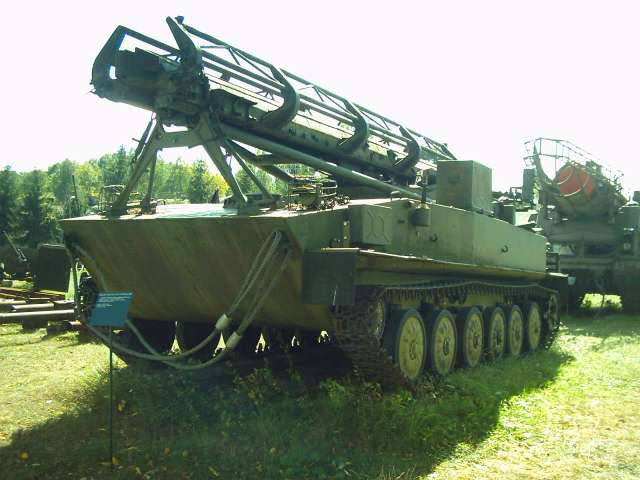
One of the surviving museum specimens of the 2P2 machine. Wikimedia Commons Photos
A small number of issued complexes 2K1 "Mars" did not allow for a full-scale rearmament of rocket forces and artillery. Only a few divisions received new equipment. The military operation of the tactical missile complex lasted until the early seventies. In 1970, the Mars system was removed from service because of obsolescence. By the middle of the decade, all combat vehicles in the army were decommissioned and decommissioned.
Most of this equipment was sent for recycling, but some samples managed to survive to our time. One of the 2P2 self-propelled launchers is now owned by the Militaryhistorical Museum of Artillery, Engineering and Signal Corps (St. Petersburg). The launcher is located in one of the halls of the museum and is shown along with a 3P1 missile model. It is also known that several more such exhibits exist in other museums.
Tactical missile system 2K1 "Mars" was one of the first systems of its class, created in our country. The authors of the project were faced with the task of developing a self-propelled system capable of transporting and launching ballistic missiles with a special warhead. The first studies of such questions began in the late forties, and by the middle of the next decade they gave the first results. By the beginning of the sixties, all work was completed, and the troops received the first production vehicles of the new missile complex. The Mars complex allowed the warhead to be delivered to a distance of no more than 17,5 km, which was significantly less than the original technical task. However, in the absence of real alternatives, the armed forces of the Soviet Union began to operate this technology.
After the appearance of more advanced models, the Mars system was relegated to secondary roles and was gradually superseded by them. However, despite not too high performance and a small amount of built equipment, the 2K1 Mars complex retained the honorary title of the first representative of its class of domestic development, which reached mass production and operation in the military.
Based on:
http://dogswar.ru/
http://rbase.new-factoria.ru/
http://militaryrussia.ru/blog/topic-187.html
Shirokorad A.B. Atomic ram of the twentieth century. - M., Veche, 2005.
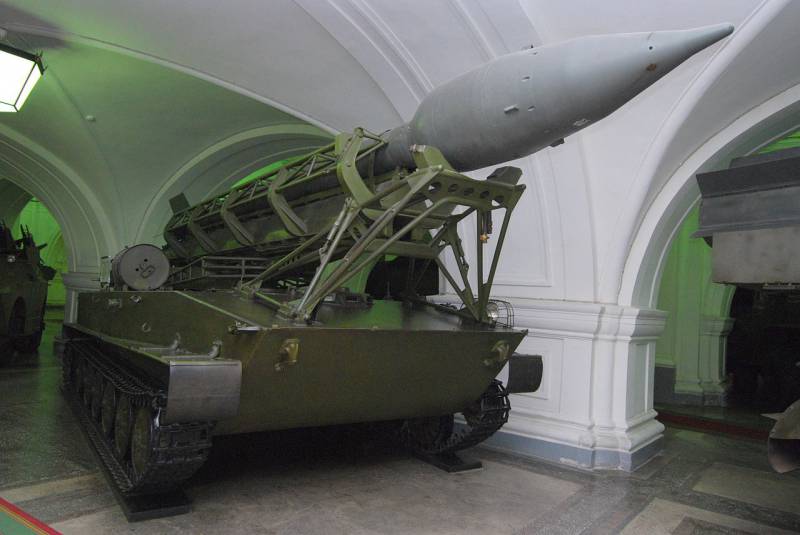
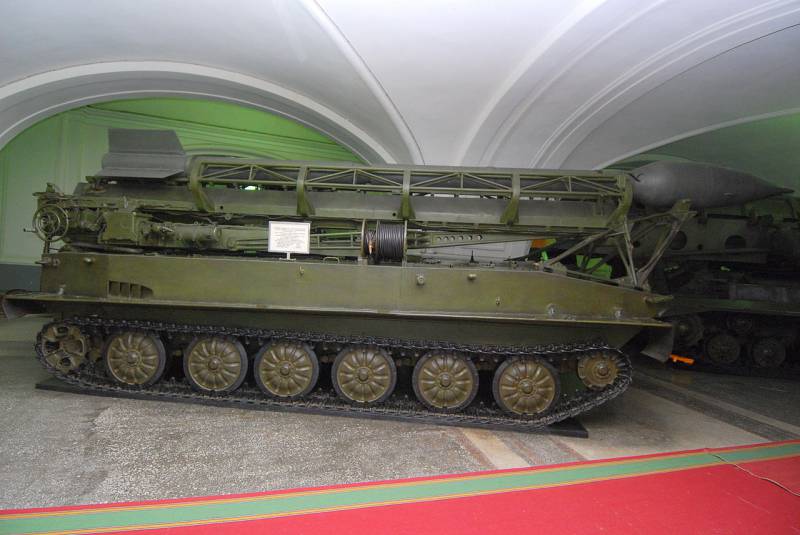
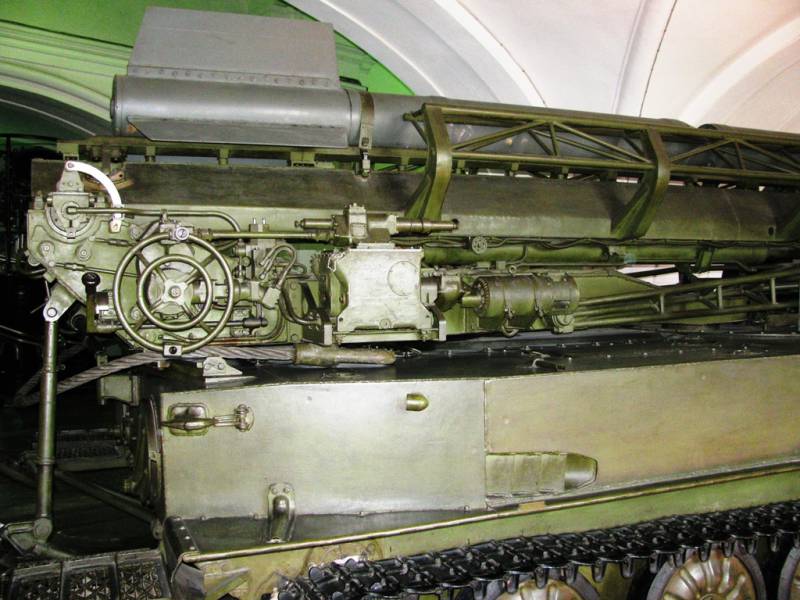
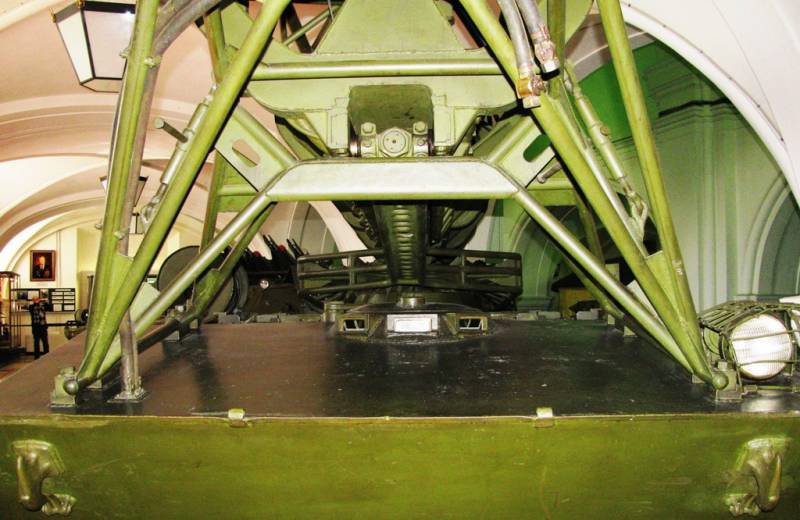
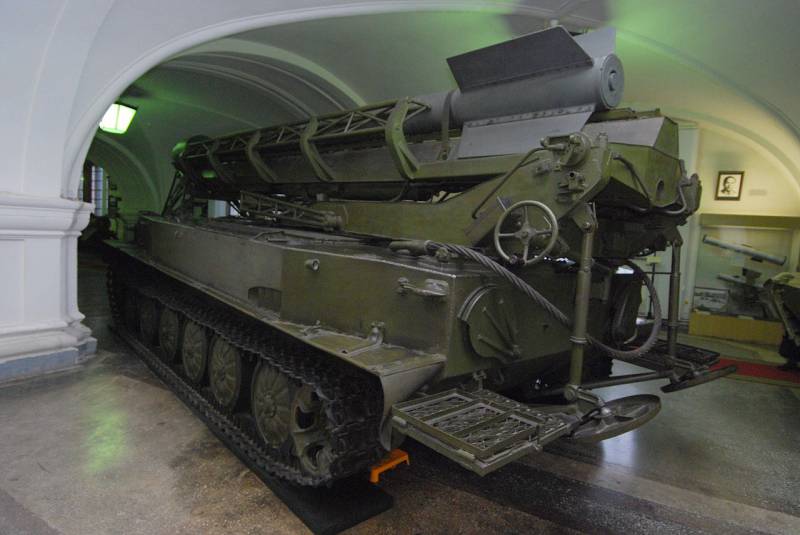
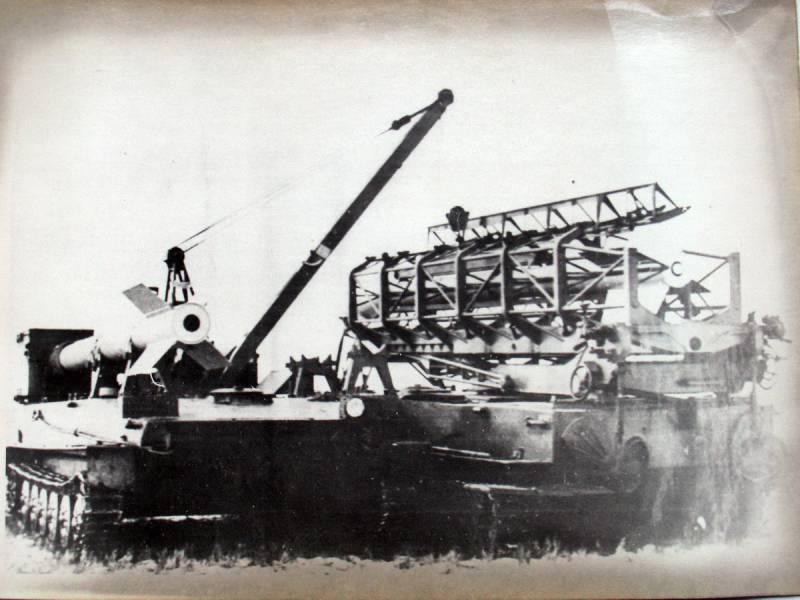
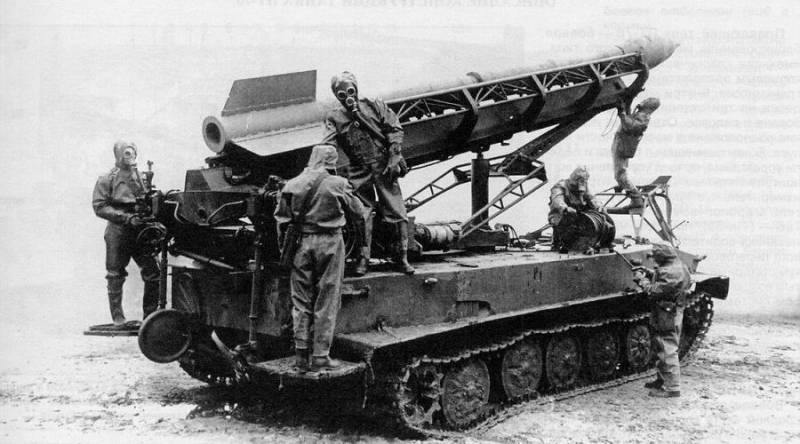
Information